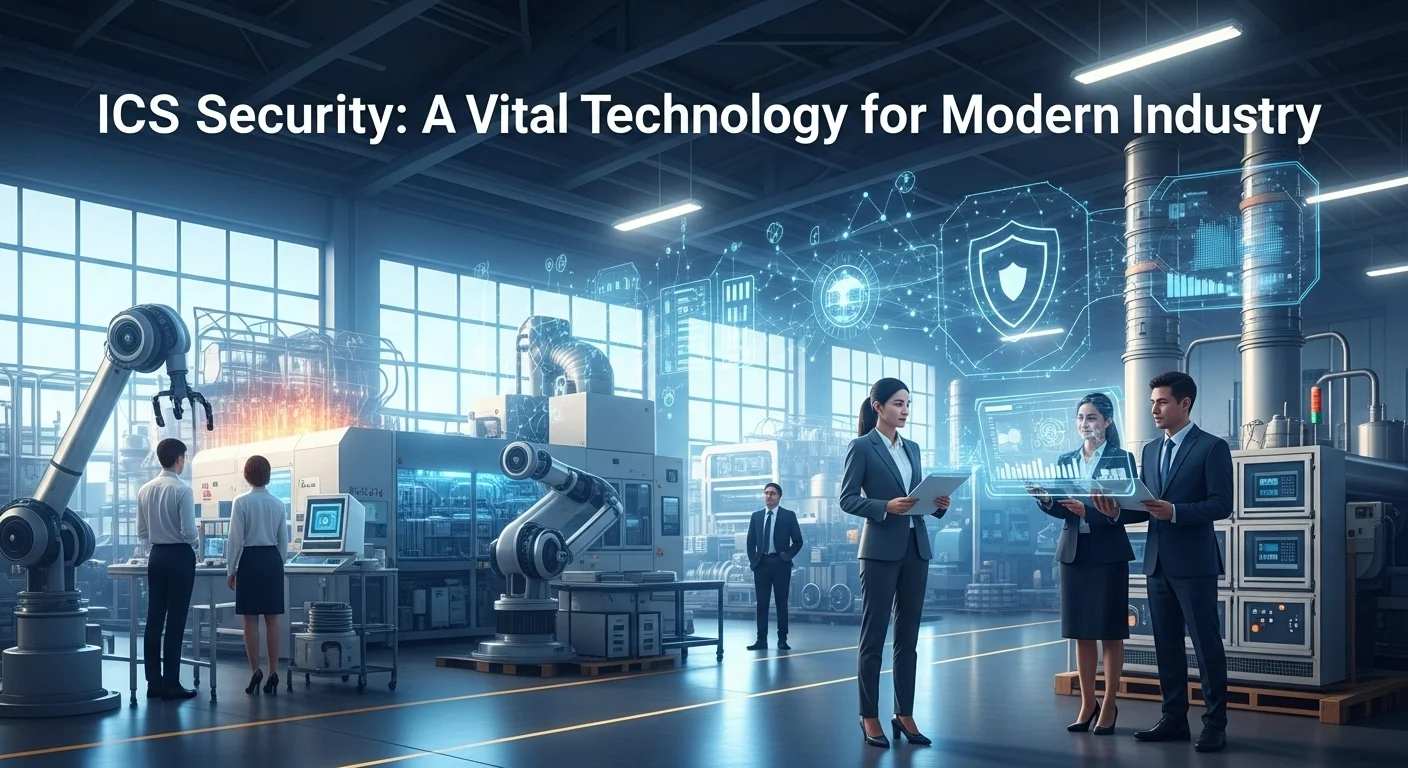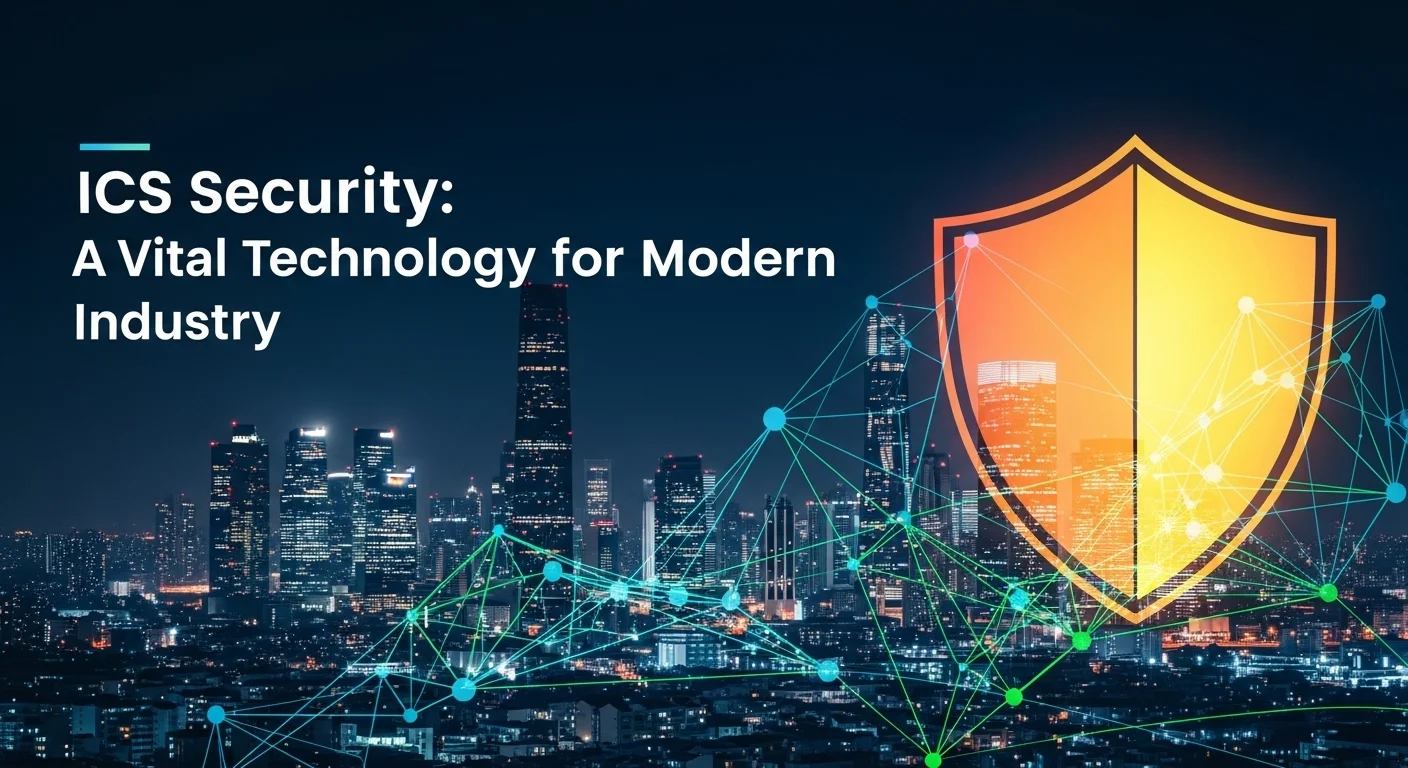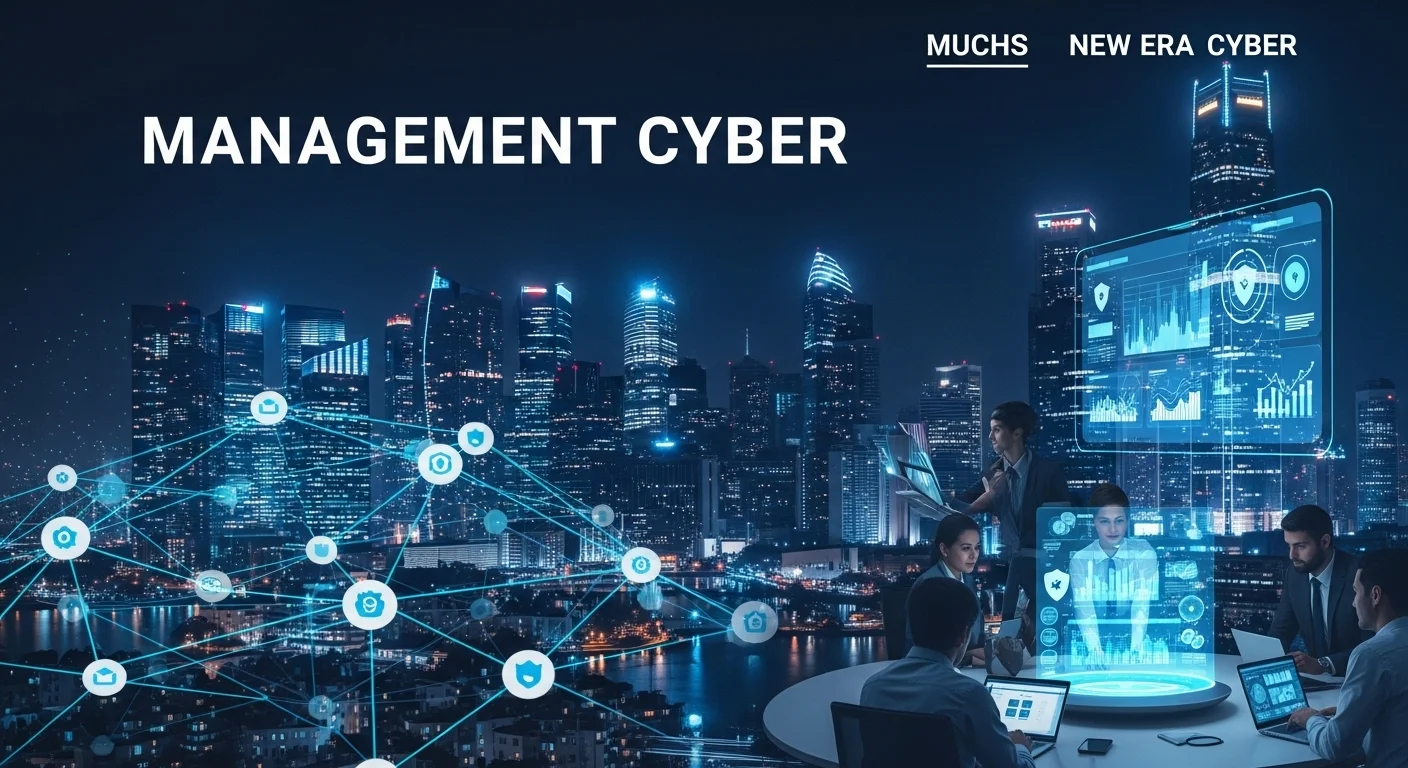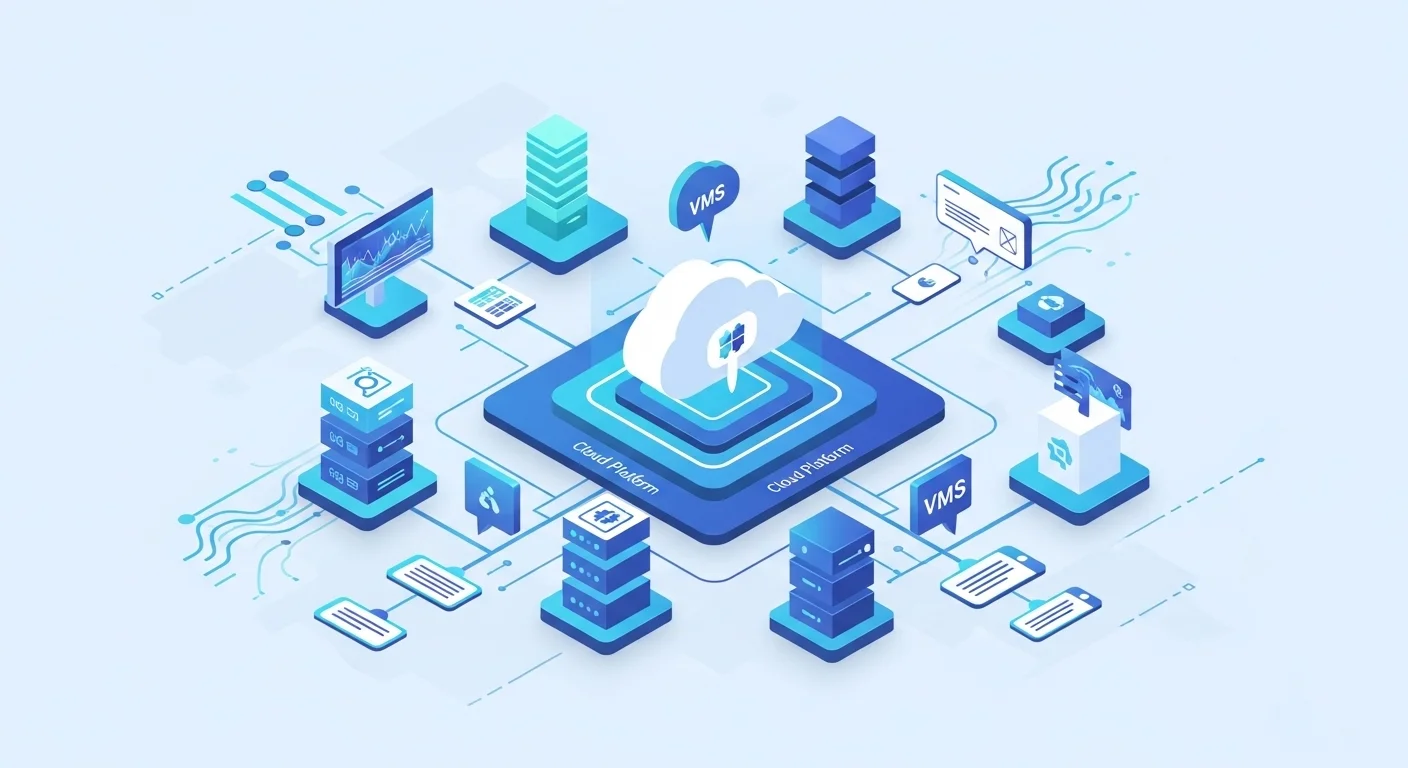ICS Security: A Vital Technology for Modern Industry

Executive Summary
In an era of unprecedented technological advancement, the convergence of Information Technology (IT) and Operational Technology (OT) has revolutionized industries but also introduced complex security challenges. Industrial Control Systems (ICS) are the nerve center of critical infrastructure, from energy grids to manufacturing plants. This article delves into the world of ICS Security, a specialized and essential field of cybersecurity. We will explore the fundamental concepts of what constitutes an ICS, its importance in our daily lives, and the severe risks posed by cyber threats. For businesses and tech enthusiasts, understanding the nuances of ics ot security is no longer optional; it's a mandate for ensuring operational continuity, physical safety, and economic stability. We will examine the landscape of ot ics cyber security, highlighting the strategies, technologies, and partnerships with ics cyber security companies that form the bedrock of a resilient industrial ecosystem. This comprehensive overview will equip you with the knowledge to appreciate the critical nature of ics network security and its role in safeguarding our modern world.
Table of Contents
What is Ics Security and why is it important in Technology?
Industrial Control System (ICS) Security is a specialized discipline within cybersecurity focused on protecting the hardware and software that monitor and control physical processes in industrial environments. [4] These systems are the backbone of modern civilization, operating everything from power plants and water treatment facilities to manufacturing assembly lines and transportation networks. [3] Understanding ICS security begins with grasping the nature of Operational Technology (OT), which encompasses the systems used to manage industrial operations, in contrast to Information Technology (IT), which manages data. [11] While IT security traditionally prioritizes confidentiality, integrity, and availability (the 'CIA triad') of data, ICS security, often used interchangeably with ics ot security, places the highest premium on safety and availability to prevent physical harm or disruption to essential services. [12, 27]
The importance of ICS security in the broader landscape of technology cannot be overstated. Historically, ICS environments were isolated, or 'air-gapped,' from corporate and external networks, creating a perception of inherent security. [2] However, the drive for efficiency, remote monitoring, and data analytics, fueled by the Industrial Internet of Things (IIoT) and smart manufacturing initiatives, has led to the convergence of IT and OT networks. [11, 3] This connectivity, while offering significant business benefits, has shattered the air-gap myth and exposed these once-isolated systems to a vast new range of cyber threats. [2] A successful attack on an ICS can have catastrophic real-world consequences, far exceeding the financial or data loss typical of IT breaches. The potential impacts include widespread power outages, contamination of water supplies, explosions at chemical plants, manufacturing shutdowns causing massive economic loss, and even loss of life. [4, 22] Therefore, a robust ot ics security strategy is not just a technology requirement but a matter of public safety and national security. [3, 43]
The Convergence of IT and OT: A Paradigm Shift
The integration of IT and OT systems represents a fundamental shift in industrial operations. IT systems, which handle business functions like email, finance, and customer relationship management, are characterized by a short lifecycle, frequent updates, and a primary focus on data protection. In contrast, OT systems are designed for long-term reliability and stability, often with lifecycles spanning decades. [5] They control physical machinery and processes where even a momentary disruption can be disastrous. [22] This fundamental difference in priorities creates significant challenges when securing a converged environment. IT security practices, such as frequent patching, cannot always be directly applied to OT environments where downtime must be meticulously planned and can be extremely costly. [2, 5] This is where the specialized field of ot ics cyber security comes into play, requiring a unique blend of expertise from both IT security professionals and control systems engineers. [2] The goal is to apply security controls that protect the industrial process without compromising its reliability or safety. This collaborative approach is essential for creating a cohesive defense against threats that can now traverse from the corporate network directly into the heart of industrial operations.
Business Applications and Benefits of Strong ICS Security
For businesses operating in critical infrastructure sectors, investing in a comprehensive ICS security program is not an expense but a critical business enabler. The primary benefit is operational resilience. By preventing cyber-incidents, companies ensure the continuous operation of their industrial processes, avoiding costly downtime, production delays, and revenue loss. [4] A strong security posture protects valuable intellectual property, such as proprietary manufacturing processes and formulas, from industrial espionage. [4] Furthermore, robust security is increasingly a regulatory requirement. Governments worldwide are establishing stringent standards for the protection of critical infrastructure, and non-compliance can result in significant fines and legal liabilities. [21] Leading ics cyber security companies provide solutions and services that help organizations meet these complex compliance mandates, such as those outlined by NERC CIP, the EU NIS Directive, and ISA/IEC 62443. [21] Beyond risk mitigation and compliance, a mature ICS security program can become a competitive advantage. It builds trust with customers and partners, enhances brand reputation, and demonstrates a commitment to safety and reliability. As industries become more digitized, the ability to securely adopt new technologies like AI and cloud analytics for process optimization hinges on having a solid foundation of ics network security. This foundation ensures that the pursuit of efficiency and innovation does not come at the expense of security and safety, allowing businesses to thrive in the Industry 4.0 era.
The evolution from isolated mechanical systems to interconnected digital ecosystems has brought immense progress, but it has also created a new and dangerous frontier for cyber warfare. The stakes are incredibly high, involving the physical machinery that underpins our society. Memorable incidents like the Stuxnet worm, which physically damaged Iranian nuclear centrifuges, and the Colonial Pipeline ransomware attack, which halted fuel distribution across the U.S. East Coast, serve as stark reminders of the potential for disruption. These events highlight the critical need for a specialized focus on protecting industrial environments. The field of ics ot security has emerged to address this specific challenge, developing unique methodologies and technologies to safeguard these vital assets. As technology continues to advance, the principles of ot ics security must be integrated into the design, operation, and maintenance of every industrial system to ensure a safe, reliable, and prosperous future. The collaboration between asset owners and specialized ics cyber security companies is crucial for navigating this complex and evolving threat landscape, making ot ics cyber security a cornerstone of modern industrial strategy.

Complete guide to Ics Security in Technology and Business Solutions
Developing a robust Industrial Control System (ICS) security program is a multifaceted endeavor that requires a blend of technical controls, strategic planning, and deep operational knowledge. A complete guide to ics ot security must begin with foundational security principles and extend to advanced business solutions, encompassing everything from network architecture to incident response. The goal is to create a resilient environment that can withstand, detect, and respond to sophisticated cyber threats targeting operational technology (OT).
Technical Methods: Building a Defensible Architecture
The cornerstone of any effective ot ics security strategy is a well-designed, defensible network architecture. This involves moving away from flat networks, where a compromise anywhere can spread everywhere, to a segmented model that contains threats and limits their impact. [14, 26]
Network Segmentation and the Purdue Model
Network segmentation is the practice of dividing a network into smaller, isolated zones to control traffic and limit access. [18, 23] The most widely recognized reference architecture for ics network security is the Purdue Model for Control Hierarchy. [14] This model organizes the industrial network into logical levels, from the physical process floor up to the corporate enterprise network:
- Level 0: The Process - Physical devices like sensors, actuators, and motors that perform the actual industrial work.
- Level 1: Basic Control - Controllers like PLCs (Programmable Logic Controllers) and RTUs (Remote Terminal Units) that monitor and manipulate Level 0 devices.
- Level 2: Area Supervisory Control - Systems like HMIs (Human-Machine Interfaces) and SCADA software that aggregate data from controllers and provide operator oversight.
- Level 3: Site Operations - Systems supporting site-wide production, such as manufacturing execution systems (MES), historians, and engineering workstations.
- Level 4: Business Logistics - The traditional IT enterprise network, housing systems like ERP, email, and internet access.
- Level 5: The Enterprise Network - The wider corporate network, including connections to the public internet.
A critical security concept within this model is the creation of a demilitarized zone (DMZ), often referred to as Level 3.5, which sits between the OT network (Levels 0-3) and the IT network (Levels 4-5). [19] All communication between IT and OT must pass through this DMZ, where it can be strictly inspected and controlled by firewalls and other security technologies. This prevents direct, uncontrolled traffic flows and severely restricts the attack surface. Proper segmentation ensures that a malware infection in the corporate email system cannot directly propagate to a critical process controller on the plant floor.
Essential Security Technologies
Beyond architecture, several key technologies are essential for a comprehensive ot ics cyber security program:
- Firewalls and Unidirectional Gateways: Next-generation firewalls (NGFWs) with deep packet inspection capabilities for industrial protocols are placed at the boundaries between network segments to enforce access control policies. For highly critical connections, unidirectional gateways (data diodes) can be used to ensure data can only flow in one direction (e.g., from the OT network to the IT network for monitoring), making it physically impossible for an attack to travel upstream. [14]
- Intrusion Detection and Prevention Systems (IDS/IPS): Specialized OT-aware IDS/IPS solutions are crucial. Unlike their IT counterparts, they understand industrial protocols (like Modbus, DNP3, Profinet) and can detect malicious or anomalous commands that could disrupt physical processes. [23] They monitor network traffic for signatures of known attacks or deviations from a baseline of normal behavior.
- Asset Inventory and Visibility: A fundamental tenet of security is 'you can't protect what you don't know you have'. [24, 5] Passive monitoring tools are used to safely discover and inventory all assets on the OT network, including their software versions, patch levels, and communication patterns. This visibility is the first step toward effective vulnerability management and threat detection.
- Security Information and Event Management (SIEM): An OT-aware SIEM collects and correlates logs from various sources across the industrial network—firewalls, servers, controllers, and IDS—to provide a unified view of security events. This enables security analysts to detect complex, multi-stage attacks and facilitates incident response. [4]
- Secure Remote Access: Remote access by vendors and internal engineers is a common necessity but also a major risk. Solutions must enforce multi-factor authentication (MFA), granular access control (granting access only to specific systems for a limited time), and full session monitoring and recording. [15]
Business Techniques and Available Resources
Technology alone is insufficient. An effective ICS security program must be integrated into the business and guided by industry best practices and frameworks. Many organizations turn to specialized ics cyber security companies for expertise in this area. Firms like Dragos, Claroty, Nozomi Networks, and Honeywell offer platforms and services specifically designed for OT environments. [6, 13]
Adopting Security Frameworks
Instead of reinventing the wheel, businesses should align their security programs with established frameworks. These provide a structured, risk-based approach to managing cybersecurity.
- NIST Cybersecurity Framework (CSF): The NIST CSF is a voluntary framework that is widely adopted across industries. [35, 17] It organizes security activities into five core functions: Identify, Protect, Detect, Respond, and Recover. [18] This provides a common language for stakeholders, from engineers to the boardroom, to discuss and manage cyber risk.
- ISA/IEC 62443: This is the leading international standard for the security of industrial automation and control systems. [14] It is a comprehensive series of documents that addresses the security of the entire lifecycle, from product development to system integration and operation. It introduces concepts like Security Levels (SLs), which define the required resilience against different types of threat actors, from casual hackers to nation-states. [14] Aligning with ISA/IEC 62443 is a key goal for many mature ics ot security programs.
- MITRE ATT&CK for ICS: This framework is a knowledge base of adversary tactics and techniques based on real-world observations of attacks on industrial control systems. [21] Security teams use it to understand how attackers operate within an OT environment, which helps in prioritizing defenses, running tabletop exercises, and improving threat detection capabilities.
Building the Business Case for Investment
Securing executive buy-in requires framing ot ics security not as a cost center, but as a protector of revenue and enabler of business continuity. The business case should focus on risk reduction, quantifying the potential financial impact of a production shutdown, safety incident, or regulatory fine. It should highlight how a secure OT environment is a prerequisite for digital transformation initiatives that drive efficiency and competitiveness. The collaboration between IT and OT teams is paramount, as they must work together to present a unified strategy that balances security needs with operational realities. [20, 24] This unified approach ensures that the chosen solutions and policies are both effective and practical for the unique demands of the industrial world.

Tips and strategies for Ics Security to improve your Technology experience
Implementing a robust Industrial Control System (ICS) security program is an ongoing journey, not a one-time project. It requires a commitment to continuous improvement, blending strategic policies, practical tools, and a security-conscious culture. For any business leveraging industrial technology, adopting best practices in ics ot security is crucial for enhancing operational resilience and ensuring a safe, secure technology experience. This involves not only deploying the right hardware and software but also empowering people and refining processes.
Best Practices for a Mature ICS Security Program
A mature security posture is built on a foundation of proven best practices. These strategies help organizations systematically reduce risk and improve their ability to defend against cyber threats.
- Establish a Comprehensive Asset Inventory: The foundational step in any security program is knowing what you need to protect. [23, 24] Organizations must create and maintain a detailed inventory of all hardware and software assets within the Operational Technology (OT) environment. This inventory should include not just controllers and servers but also network devices, firmware versions, and installed software. Automated discovery tools designed for OT are essential, as they can passively identify assets without disrupting sensitive industrial processes. [5] This complete visibility is the bedrock for vulnerability management and incident response.
- Enforce Strict Network Segmentation: Do not operate a flat network. [14] Implement a defense-in-depth strategy by segmenting the network based on the Purdue Model or a similar framework. [18] Use firewalls to create secure zones and conduits, strictly controlling traffic flow between the IT and OT environments, as well as between different production lines. The goal of this ics network security practice is to contain a breach within a single segment, preventing it from spreading to more critical parts of the plant.
- Manage and Control Access: Implement the principle of least privilege for all users and systems. [23] This means each user, application, and device should only have the minimum level of access necessary to perform its function. Enforce strong password policies and, wherever technically feasible, deploy multi-factor authentication (MFA), especially for remote access and privileged accounts. [15] Access control is not just digital; physical security of control rooms, server racks, and network ports is equally critical. [23]
- Develop a Robust Vulnerability Management Program: Industrial environments are rife with legacy systems and unpatched vulnerabilities. [5] A risk-based approach to vulnerability management is essential. This involves identifying vulnerabilities through the asset inventory, assessing their potential impact on the industrial process, and prioritizing remediation. Since patching in OT can be difficult and risky, compensating controls—such as virtual patching with an Intrusion Prevention System (IPS) or enhanced network monitoring—are often necessary. [15] Partnering with ics cyber security companies can provide the threat intelligence needed to prioritize the most dangerous vulnerabilities.
- Create and Practice an Incident Response Plan: It's not a matter of *if* an incident will occur, but *when*. A well-defined Incident Response (IR) plan tailored to the unique challenges of OT is non-negotiable. This plan must prioritize safety and operational continuity. [22] It should outline clear steps for detection, containment, eradication, and recovery. Crucially, this plan must be tested regularly through tabletop exercises and simulations involving both IT and OT staff to ensure everyone knows their role in a crisis.
- Implement Continuous Monitoring and Threat Detection: You cannot respond to a threat you cannot see. Deploy specialized ot ics security monitoring solutions that understand industrial protocols and can detect anomalous behavior indicative of a cyberattack. [4, 26] Continuous monitoring provides the real-time visibility needed to detect threats early in the attack lifecycle, minimizing potential damage. This is a core component of any modern ot ics cyber security strategy.
Business Tools, Tech Experiences, and Quality Resources
Navigating the complex world of ICS security is easier with the right tools and resources. A combination of commercial platforms, open-source software, and government guidance can provide a powerful toolkit for any organization.
Essential Business Tools and Platforms:
- Commercial OT Security Platforms: Leading vendors like Dragos, Nozomi Networks, Claroty, and TXOne Networks offer comprehensive platforms that combine passive asset discovery, vulnerability management, threat detection, and incident response capabilities into a single solution. [6, 16, 40] These platforms are purpose-built for industrial environments and provide the deep visibility and analytics needed to secure complex operations.
- Next-Generation Firewalls (NGFWs): Companies like Palo Alto Networks, Fortinet, and Check Point offer firewalls with specific features for industrial settings, including inspection of OT protocols and ruggedized hardware for harsh environments. [1, 6]
- Data Diodes: For the highest level of security in one-way data transfers, vendors like Waterfall Security Solutions provide hardware-enforced unidirectional gateways. [13]
- Open-Source Tools: While commercial tools offer comprehensive support, open-source software can be valuable for specific tasks. Tools like Security Onion, which bundles multiple IDS engines like Suricata and Zeek, can be configured for OT network monitoring. Wireshark, with its vast library of protocol dissectors, is an invaluable tool for manual traffic analysis.
Quality External Resources:
Staying informed is critical. Organizations should leverage the wealth of information provided by government agencies and industry groups. A vital resource for any business operating in the United States is the Cybersecurity and Infrastructure Security Agency (CISA). CISA provides a vast array of resources, including alerts, advisories on specific vulnerabilities, and best practice guidelines for securing industrial control systems. A great starting point is the CISA Industrial Control Systems page, which serves as a central hub for their ICS-related guidance and programs. [36, 37] This and other resources from bodies like the SANS Institute provide the knowledge base needed to build and mature an effective security program. [17]
Ultimately, improving your technology experience with ICS means shifting from a reactive to a proactive security culture. It's about embedding security into every phase of the technology lifecycle, from system design to decommissioning. By combining best practices like network segmentation and access control with powerful business tools and continuous learning, organizations can transform their ics ot security posture from a liability into a strategic asset. This proactive stance not only protects against catastrophic failures but also builds a resilient foundation for future innovation in the digital industrial age.
Expert Reviews & Testimonials
Sarah Johnson, Business Owner ⭐⭐⭐
The information about Ics Security is correct but I think they could add more practical examples for business owners like us.
Mike Chen, IT Consultant ⭐⭐⭐⭐
Useful article about Ics Security. It helped me better understand the topic, although some concepts could be explained more simply.
Emma Davis, Tech Expert ⭐⭐⭐⭐⭐
Excellent article! Very comprehensive on Ics Security. It helped me a lot for my specialization and I understood everything perfectly.



